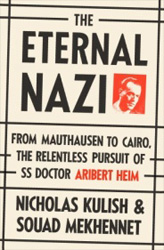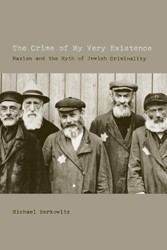Earlier this week, Nicholas Kulish wrote about the Rosencrantzs and Guildensterns of history. His most recent book, The Eternal Nazi, co-authored with Souad Mekhennet, is the story of Nazi physician Dr. Aribert Heim, who fled postwar justice and hid in Egypt from Nazi hunters. He is also the author of a novel, Last One In. He will be blogging here all week for Jewish Book Council and MyJewishLearning.
 “What’s a Nazi?” It was a question I had never heard before or even considered possible but there the man stood, asking me in total seriousness what Nazis were.
“What’s a Nazi?” It was a question I had never heard before or even considered possible but there the man stood, asking me in total seriousness what Nazis were.
In retrospect it made perfect sense. I was in one of the most isolated places on earth, deep in South Sudan’s Jonglei State. There was no electricity and no running water. In the rainy season, which was just beginning, the roads were flooded and the dirt landing strips often too muddy for even small airplanes to land. Other than the occasional United Nations helicopter the people here were completely cut off.
I was six years old when Raiders of the Lost Ark, with its Nazi villains, made everyone I knew want to be an archaeologist with a bullwhip. We read The Diary of a Young Girl by Anne Frank in junior high. Schindler’s List came out my freshman year of college and I went to see it with my parents when I was home on winter break, while Primo Levi and Elie Wiesel were prominently featured on the syllabus.
Studying German, the Holocaust was ever present. One of the first lines of poetry you learn is Paul Celan’s “Der Tod ist ein Meister aus Deutschland,” death is a master from Germany. Unfortunately for the people of South Sudan or the Central African Republic, the master’s disciples still roam the earth.
I arrived in Nairobi a year ago to work as the East Africa correspondent for The New York Times but I hadn’t quite finished working on The Eternal Nazi, a book that grew out of my work as the newspaper’s Berlin bureau chief. That was how I found myself sitting in a plastic chair, under a tree trying to rewrite the epilogue. The young South Sudanese man approached, wanting to know what I was doing on my MacBook.
“I’m working on a book,” I said.
“What’s it about?” he asked. His English was quite good because, as a refugee, he had gone to school in Kenya.
“Nazis,” I said, prompting the question that so disarmed me. “They were really bad and they killed lots of people.”
For the people of South Sudan, after decades of war with terrible atrocities against civilians committed by all sides, that described a lot of people.
“Like how many?” he asked skeptically. I thought about the six million killed in the Holocaust, the Soviet soldiers and civilians, the people buried in the London blitz or drowned in ships sunk by U‑boats.
“Millions,” I said. “Tens of millions.”
“Oh,” he said, nodding, finding the number sufficient. “That really is a lot.” He paused then asked me, “What were they called again?”
“Nazis,” I said.
“I’ll remember that,” he said, then left me alone to write for as long as my battery lasted or until I could find a generator.
Nicholas Kulish is an author and correspondent for The New York Times. Read more about him and his work here.
Related Content:
- Essays: On the Holocaust
- Reading List: Holocaust
- Nazis on the Run: How Hitler’s Henchmen Fled Justice by Gerald Steinacher
- Hitlerland: American Eyewitnesses to the Nazi Rise to Power by Andrew Nagorski
Nicholas Kulish is an author and correspondent for The New York Times. His most recent book, The Eternal Nazi, co-authored with Souad Mekhennet, is the story of Nazi physician Dr. Aribert Heim, who fled postwar justice and hid in Egypt from Nazi hunters. He is also the author of a novel, Last One In.



